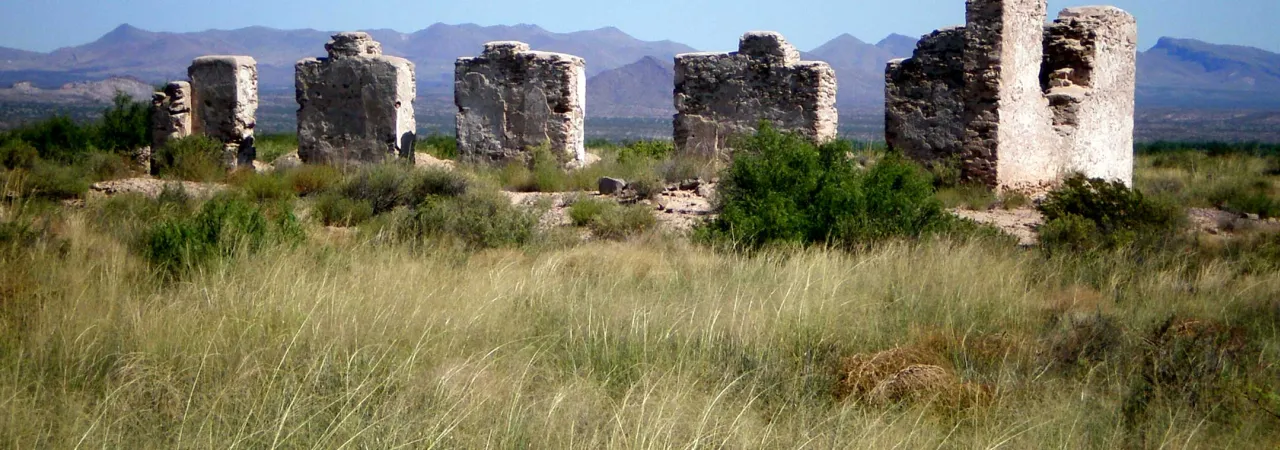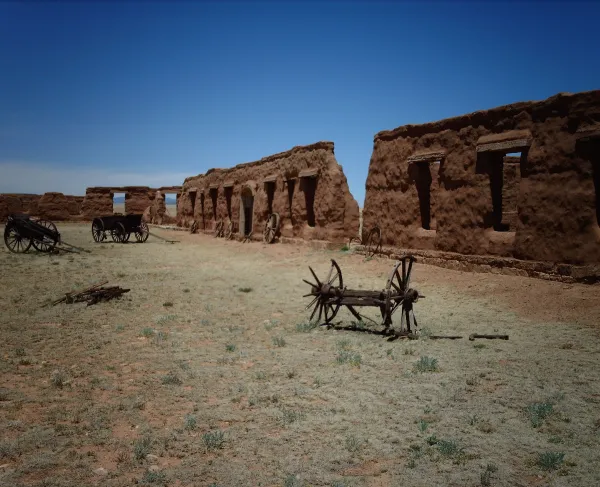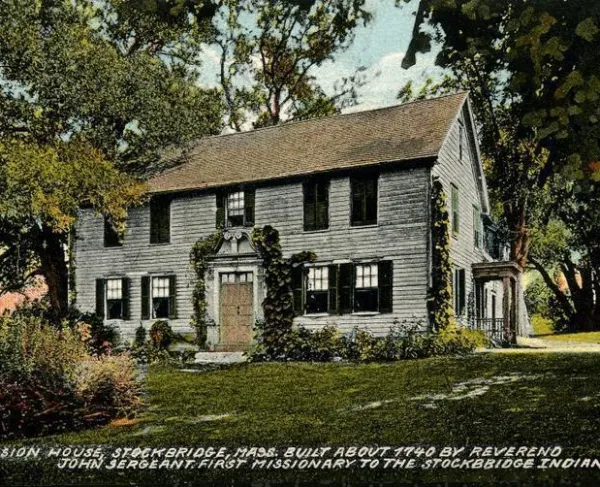Although today Fort Craig sits in ruins half a mile from the banks of the Rio Grande, it was once one of the largest forts in the American West and played a key role in both the Civil War and the American Frontier Wars. The fort was constructed in 1853 along the old Spanish “Camino Real,” or Royal Road, in southern New Mexico as part of an effort to secure the 529,000 square miles ceded by Mexico to the United States at the end of the Mexican War. A provision from the Treaty of Guadelupe Hidalgo promised American protection to all settlers in the territory, American or Mexican, from Apache and Navajo attacks; Fort Craig was one of several forts established in the late 1840s and early 1850s to fulfill the terms of the treaty.
The fort’s immediate predecessor was Fort Conrad, built in 1852 on the trade route between El Paso in the south and Albuquerque and Santa Fe in the north. But Fort Conrad’s location was poorly chosen, and the fort was subject to flooding and proved difficult to construct and maintain. Fort Craig was built nine miles downstream and two companies under the command of Captain David Chandler--one infantry and one dragoons—left Fort Conrad to occupy the new fort in March 1853.
The fort covered fifteen acres and would eventually hold 22 adobe and rock buildings and a large parade ground. Originally built to garrison two companies, the fort was often overcrowded. Notably, the fort was designed primarily as a base for expeditions, not to withstand direct assaults itself. A defensive ditch did surround the perimeter, to which substantial earthworks would be added during the Civil War, and artillery was mounted on the walls.
Fort Craig would be in use for the next thirty years, but its most important moment came in 1862, when it was key to the defeat of the Confederate New Mexico Campaign under General Henry Sibley. Sibley, leading about 2,500 men in what became known as the “Sibley Brigade,” hoped to take New Mexico Territory, including modern-day Arizona; Colorado and its valuable gold and silver fields; and even open a Confederate pathway to the Pacific through California. His immediate plan was to push north up the Rio Grande Valley to Fort Union in northern New Mexico, taking Fort Craig along the way.
The Union commander in New Mexico Territory was Colonel Edward Canby, who had succeeded to the post after many other officers serving in the department—including Sibley himself—resigned and left to join the Confederacy. Canby rapidly began gathering reinforcements, calling for volunteers, and re-allocating supplies from other forts to Fort Craig; meanwhile, a convention of local citizens met at Mesilla and declared their allegiance to the Confederacy. A small Confederate force under Lieutenant Colonel Baylor won the First Battle of Mesilla and held the area around the town but remained exposed to Union attack; Sibley’s upcoming expedition would reinforce Baylor’s men.
Sibley approached the fort in late February 1862. It had been a difficult march from Texas, where the Sibley brigade had formed, and his men urgently needed Fort Craig’s supplies. But a frontal assault on the fort—now holding Canby’s 3,800 men and a collection of artillery made more impressive by the addition of “Quaker guns,” really only disguised tree trunks—would be both uncertain and costly. Instead, he successfully drew Canby out of the fort by threatening his supply lines. On February 21, Confederate forces claimed victory at the Battle of Valverde, and Canby retreated back to the fort. However, when Canby refused to surrender the fort, Sibley remained without supplies and was forced to continue north with Fort Craig still threatening his rear. A month later, Union and Confederate forces fought to a draw at the Battle of Glorieta Pass in northern New Mexico. Facing high casualties and a severe lack of supplies, Sibley’s hopes of conquering New Mexico disappeared, and he was forced into a long retreat. Canby, leading regulars from Fort Craig, harassed Sibley’s men as they left but avoided another major battle. Further attempts to take New Mexico territory never materialized and the Confederacy never came as close to victory in the Far West again.
Since its institution, Fort Craig had served as a center for countering the low-grade guerrilla conflict constantly waged by the Apache and Navajo. In the 1850s, this amounted to reprisals for raids on American and Mexican settlers and attempts to recover stolen livestock; by 1863 it escalated to full war with the Mescalero Apache and the Navajo. As the terms of enlistment expired for the volunteers who had joined the Union Army at the outbreak of the Civil War, the number of troops stationed at Fort Craig dropped considerably. Scouting missions continued through the late 1860s, and, like previous expeditions, often focused on retrieving stolen property and countering Apache or Navajo attacks. In the 1870s, many of the Apache were moved to reservations and the conflict lessened; accordingly, Fort Craig was closed in 1878. It temporarily reopened in 1879 after raids by the Victorio Apache but played a minimal role in the following conflict, which mostly occurred farther south. The fort was permanently demilitarized in 1885.
Captain Jack Crawford, the famous adventurer, had been appointed post trader and continued to live at the fort with his family after it closed, acting as its custodian. The land was sold to the Valverde Land and Irrigation Company in the 1890s, and passed through several private owners, remaining largely undeveloped. It became part of the Oppenheimer family’s New Mexico property and was fewer than thirty miles from the Trinity test site. The Hollywood western Fort Massacre, released in 1958, was loosely inspired by the fort’s history. The site was donated to the Archaeological Conservancy and today is maintained as a historic site by the Bureau of Land Management.
Related Battles
276
229





